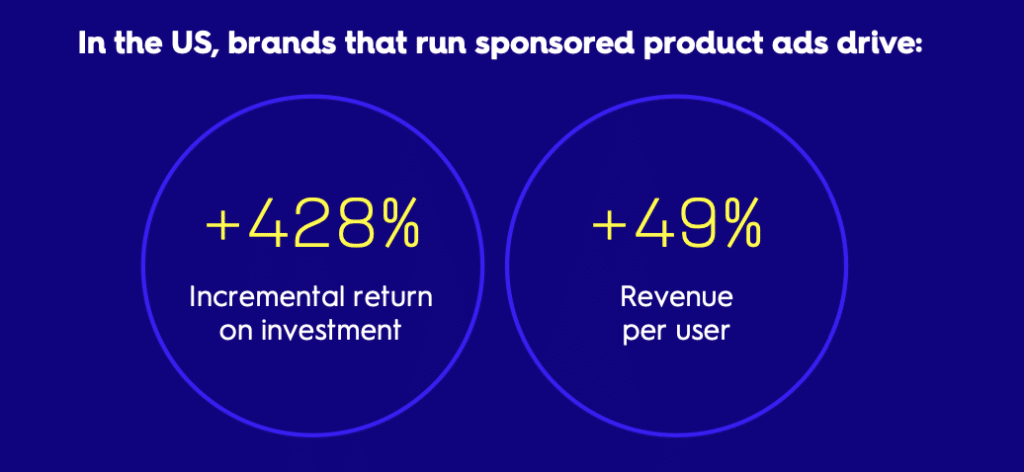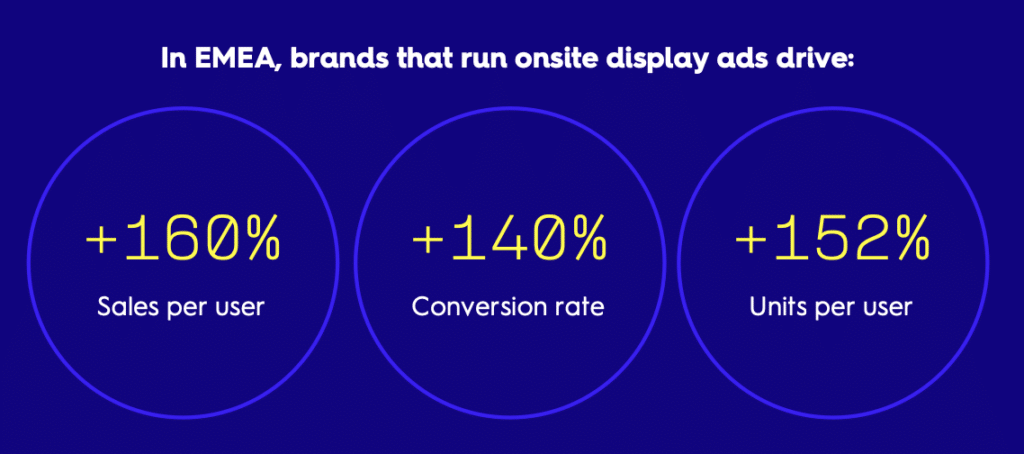Return on ad spend has long been the golden retail media metric that guides how brands measure campaign success. ROAS is valuable—it provides a direct line of sight into the financial impact of brands’ investments. But it doesn’t paint the full picture.
To understand what you’re really getting out of your campaigns, advertisers need to broaden their measurement approach and consider a full spectrum of benefits. Our latest study analyzed data from 44,000+ retail media campaigns and survey results from brand leaders around the world to answer brands’ most pressing questions about the full value of their investments. Here are six benefits beyond ROAS that retail media delivers:
1. Incrementality
Incrementality shows what wouldn’t have happened without a brand’s advertising effort. This helps brands understand the direct cause-and-effect relationship between their advertising activities and shopper behavior.
Criteo data shows that retail media is an effective strategy for achieving consistent incrementality results. For example, US brands that conducted incrementality tests with sponsored product ads witnessed a staggering +428% incremental return on investment.

Similarly, brands in EMEA saw a 160% increase in sales per user after running onsite display ads.

2. Share of sales
Share of sales provides a clear indication of a brand’s market position relative to their competitors. It serves as a benchmark for measuring growth by tracking their portion of sales within a particular category.
Retail media is a key strategy that brands use to gain more visibility on the digital shelf and stand out in a competitive market. Criteo data shows that within just two weeks of advertising on top retail platforms, brands substantially increase their market share. On average, they reported a 59% boost in their organic share of sales.¹
3. Omnichannel sales
Omnichannel metrics provide a complete view of customer interactions, whether online or in-store. But online and offline touchpoints don’t operate in silos, and their metrics shouldn’t either.
Investing more in online advertising to enhance a brand’s digital presence directly influences the world of offline, too. Our global retailer data shows that the more brands increase their online spend, the more their offline sales rise.

Examining omnichannel sales also provides a comprehensive view of ROAS across touchpoints. When campaign analysis is broadened to include offline attribution, there is a notable improvement—campaigns typically see an average ROAS increase of 42% compared to those that only consider online attribution.
4. New to brand rate
Achieving a high new to brand rate indicates successful market expansion and effectiveness in reaching new customer segments. Although attracting new customers is a growing challenge among brands, retail media stands out as an effective tool for acquisition.
Criteo data from the Apparel & Accessories, Arts & Entertainment, and Health & Beauty sectors shows that 3 in 5 people who click and purchase through a retail media campaign are new to the brand* shoppers.

*”New to brand” refers to a shopper who did not previously complete a purchase from a brand within the last six months and then converted on a campaign.
Retail media can also drive hidden cost efficiencies, enabling brands that advertise consistently to enjoy lower acquisition costs and stretch their budgets further. When comparing two groups, brands that advertised for two consecutive quarters had a significantly lower cost per acquisition than those that advertised for just one quarter.

5. Repeat rate
Once a brand acquires new customers, it’s crucial to continue engaging them to secure long-term brand loyalty and higher lifetime value. Tracking repeat purchase rates helps brands assess retention success beyond an initial transaction and ensure sustainable growth.
Our data shows that users who interact with retail media ads are more likely to become repeat buyers. On average, shoppers who make a purchase prompted by an ad continue to buy from the brand five more times over the next six months.
Although the frequency of repeat purchases can differ across verticals, all categories experience repeat brand buyers.

6. Social proof
Retail media has the power to shape positive conversations online through targeted messaging and real-time engagement. These strategies motivate shoppers to organically share their positive experiences with product reviews and on social media, reinforcing a brand’s social proof and influencing other shoppers’ purchasing decisions.
Our survey shows that 52% of brands globally see better consumer product reviews as a result of their investment in retail media. ²
Expand your measurement approach
A hyper focus on retail media ROAS can cause advertisers to miss essential indicators of success. By adopting a broader measurement approach, advertisers can fully understand the impact of their efforts and invest in strategies that not only boost immediate sales but also foster lasting customer relationships.
Read on for more ways to measure retail media success by downloading our latest report, The ROAS Trap: Why your retail media campaigns are delivering more than you think.
¹Source: US & EMEA Retail Media Data, 2023, Aggregate results from 2,420 brands
²Source: Criteo, Commerce Media Ecosystem Survey, Q4 2023, N=261

















